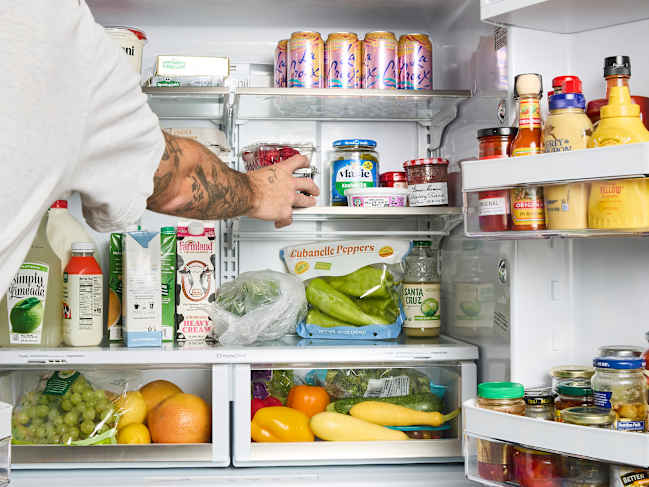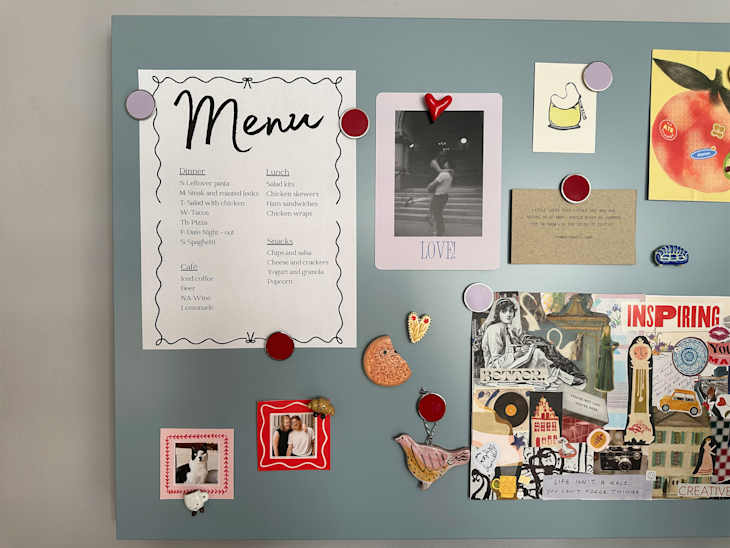

My partner and I are busy people; we also like to cook and have a variety of food options in our home. Earlier this year we noticed we’d buy a bunch of groceries, only for them to sit in our fridge and spoil (but not because we didn’t want to eat them — we just literally forgot they were there).
You see, we’re both neurodivergent and tend to struggle with object permanence. Essentially, if something is out of sight, it’s out of mind. So we started printing out a physical menu and hanging it in our kitchen — as if we were dining at our very own private restaurant each week.

Why I Print Out a Weekly Food Menu (and You Should Too!)
Our weekly food menu includes our basic dinner lineup, plus a list of snacks, drinks, and lunch ideas that we can easily reference without much thought. Brainstorming our dinners helps us remember what groceries we actually have, and encourages meal planning ahead of time — rather than in the moment when we’re hungry (or hangry!). It’s much less overwhelming when I see “ham sandwiches” on our menu. Instead of staring at random ingredients that seemingly don’t go together and trying to come up with an idea for dinner on the spot, we just grab what we need in the fridge and get cooking.
Implementing the weekly food menu has also helped us save money at the grocery store and reduce food waste. When we don’t print out the weekly menu, we sometimes end up throwing out entire packages of blueberries, deli meat, and salad kits — just because we completely forgot we had them. Or we end up ordering takeout because it’s easier than figuring out what we want to cook.
During the weeks we do print out the menu and hang it up, we cook more often, toss fewer ingredients, and save more than $50 between unused groceries and takeout.
3 Tips for Creating Your Weekly Food Menu
- Think about the menu categories. We always include dinners, snacks, lunch, and drinks. If you typically make breakfast at home, you’ll want to include those meals. If you work somewhere that provides lunch (lucky you!), you can probably skip your own lunch menu.
- Make your menu immediately after your grocery shop. This is when all of the items you just spent those hard-earned dollars on are freshest in your mind — your ideas for meals and snacks will be flowing.
- Cross menu items off as you run out of them. Just like at a restaurant, when popular menu items sell out, this is a great reminder of the dishes you enjoyed most. If you want those meals for the following week, you should also add those out-of-stock items to your grocery list. Conversely, look at your menu to see what you didn’t really gravitate toward, so you don’t buy more of those groceries during your next shop.
Do you have a smart tip for saving money on groceries? Tell us about it in the comments below.
The Weekly Checkout
Sign up for The Weekly Checkout to get the most up-to-date grocery news, tips, and highlights.